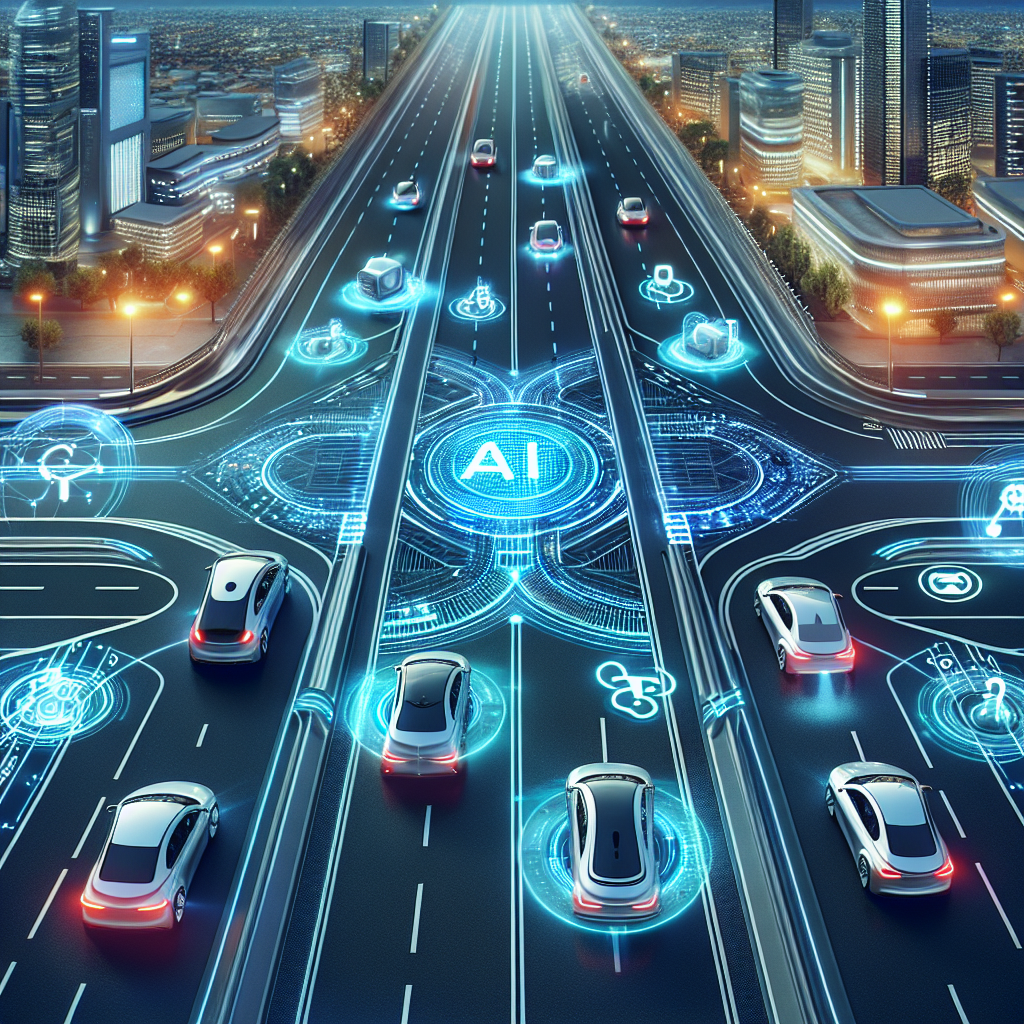Artificial intelligence (AI) has been at the forefront of technological advancements in recent years, and one of the most promising applications of AI is in the development of autonomous vehicles. These self-driving cars have the potential to revolutionize the way we travel, making our roads safer and more efficient. In this article, we will explore how AI is being used to improve the safety and efficiency of autonomous vehicles.
AI Development in Autonomous Vehicles
Autonomous vehicles rely on a combination of sensors, cameras, radar, and lidar (light detection and ranging) to perceive their surroundings and make decisions in real-time. These sensors collect vast amounts of data, which is then processed by AI algorithms to navigate the vehicle, detect obstacles, and make decisions such as changing lanes or stopping at red lights.
One of the key challenges in developing autonomous vehicles is ensuring that they can safely navigate complex and unpredictable environments. AI plays a crucial role in this by enabling the vehicle to learn from its past experiences and make decisions based on real-time data. Machine learning algorithms, a subset of AI, are used to train autonomous vehicles to recognize patterns in data and make predictions about their environment.
For example, a self-driving car can use machine learning algorithms to analyze the behavior of other vehicles on the road and predict their movements. This allows the autonomous vehicle to anticipate potential hazards and take evasive action to avoid accidents. In this way, AI helps to improve the safety of autonomous vehicles by enabling them to react quickly and adapt to changing conditions.
Another key benefit of AI in autonomous vehicles is its ability to optimize driving efficiency. AI algorithms can analyze traffic patterns, road conditions, and weather forecasts to optimize the vehicle’s route and speed. By taking into account factors such as traffic congestion and road closures, AI can help autonomous vehicles avoid delays and reach their destination more quickly.
AI can also improve the energy efficiency of autonomous vehicles by optimizing their driving behavior. For example, AI algorithms can adjust the vehicle’s speed and acceleration to minimize fuel consumption and reduce emissions. This not only benefits the environment but also helps to reduce operating costs for fleet operators.
Overall, AI development in autonomous vehicles is helping to make our roads safer and more efficient. By enabling self-driving cars to learn from their environment and make informed decisions, AI is paving the way for a future where accidents are rare, traffic congestion is minimized, and transportation is more sustainable.
FAQs
Q: Are autonomous vehicles safe?
A: Autonomous vehicles have the potential to be safer than human-driven vehicles, as they are not subject to distractions, fatigue, or human error. However, there are still challenges to overcome in ensuring the safety of autonomous vehicles, such as navigating complex environments and interacting with other road users.
Q: How do autonomous vehicles perceive their surroundings?
A: Autonomous vehicles use a combination of sensors, cameras, radar, and lidar to perceive their surroundings. These sensors collect data about the vehicle’s environment, such as the position of other vehicles, pedestrians, and road signs. This data is then processed by AI algorithms to make decisions about how to navigate the vehicle.
Q: How do autonomous vehicles make decisions?
A: Autonomous vehicles use AI algorithms to make decisions based on the data collected by their sensors. These algorithms analyze the data in real-time to identify obstacles, predict the behavior of other road users, and navigate the vehicle safely to its destination. Machine learning algorithms are used to train the vehicle to recognize patterns in data and make informed decisions.
Q: What are the benefits of autonomous vehicles?
A: Autonomous vehicles have the potential to improve road safety, reduce traffic congestion, and lower emissions. By removing the human element from driving, autonomous vehicles can react more quickly to changing conditions and minimize the risk of accidents. They can also optimize driving efficiency by analyzing traffic patterns and road conditions to reach their destination more quickly.
Q: When will autonomous vehicles be available to the public?
A: Autonomous vehicles are already being tested on public roads in some cities, but widespread adoption is still several years away. Regulatory hurdles, technological challenges, and public acceptance are all factors that will influence the timeline for the deployment of autonomous vehicles. However, experts predict that autonomous vehicles could become a common sight on our roads within the next decade.

